What the Internet Was Like in 2012
Internet culture pivoted to images and videos over 2012, with the growing popularity of image sharing apps like Instagram and Pinterest, video creators on YouTube, and pictures on Reddit.
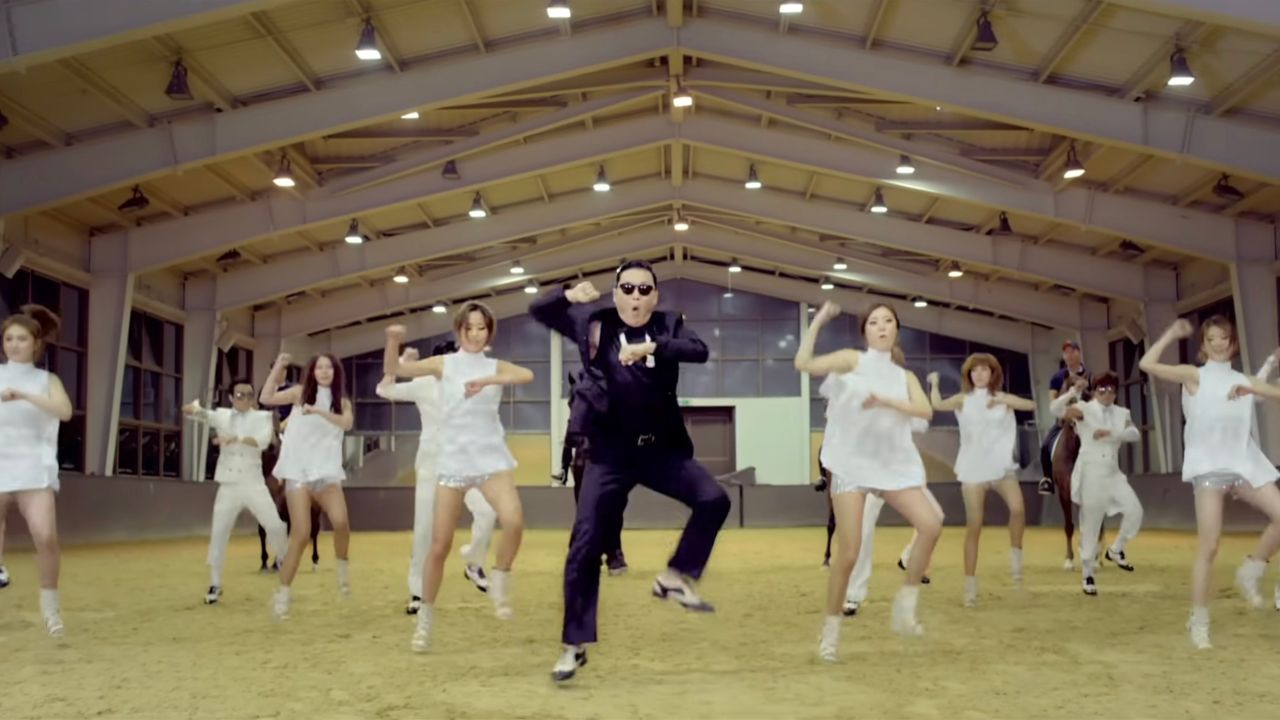
If 2012 was the year that Web 2.0 quietly died, it was also when a new kind of internet was born: a more mobile and visual one, with images and videos leading the way.
Facebook’s acquisition of Instagram in April 2012 signalled that smartphone apps would become the default format for internet content. Also in 2012, we saw Pinterest grow into a top social network, YouTube become the first major streaming platform, and “picture subreddits” take Reddit into the mainstream.
Rapid Mobile Adoption
At the D10 Conference at the end of May 2012, star analyst Mary Meeker gave her annual presentation of internet trends. Mobile technology was being rapidly adopted, she said, although it was "still in the early stages."
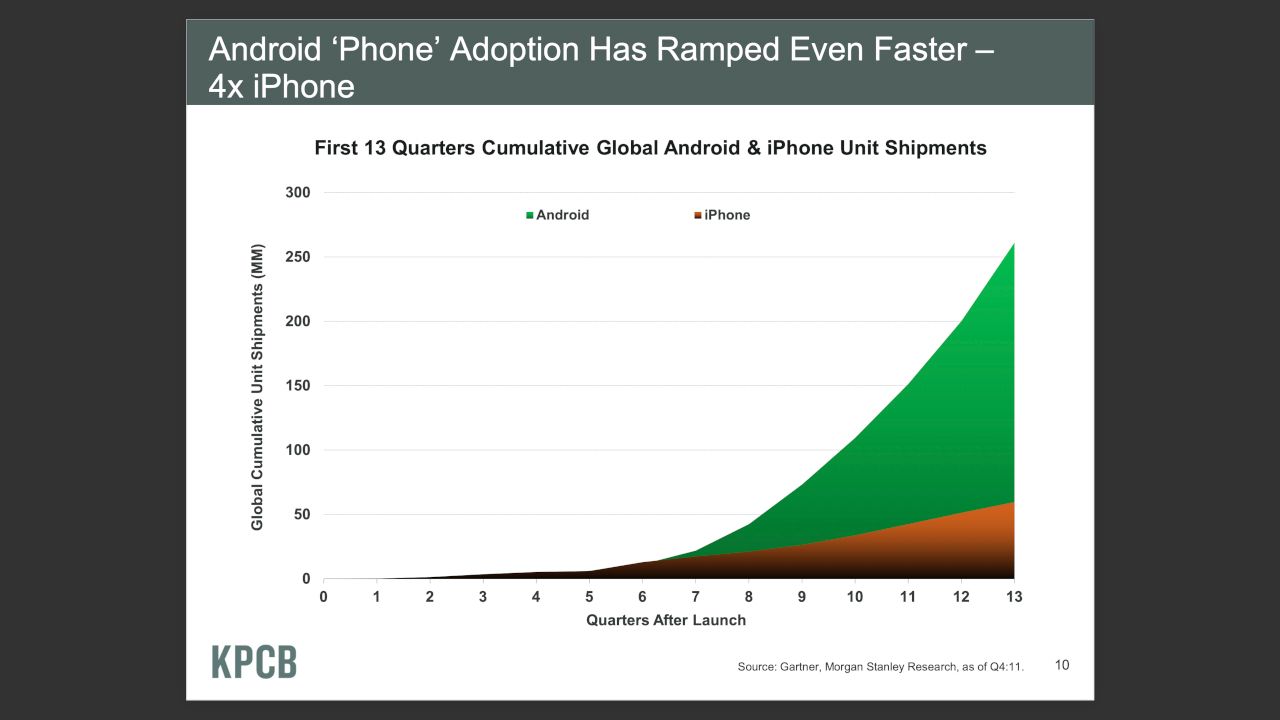
Mobile devices were the biggest growth area that Meeker identified. iPhone purchases continued to grow, while iPads — which had been launched at the beginning of the decade — were growing even faster. But the growth of Android smartphones eclipsed both. Any way you look at it, smartphone and tablet adoption was booming.
This in turn led to apps becoming the main format for internet content, in many ways usurping web pages. Instagram, a quirky photo sharing app, was a prime example — it didn’t even have a functional website! In fact, it was only available as an iPhone app until April 2012, at which point an Android version was finally released. A matter of days later, Facebook swooped in and acquired the young startup.
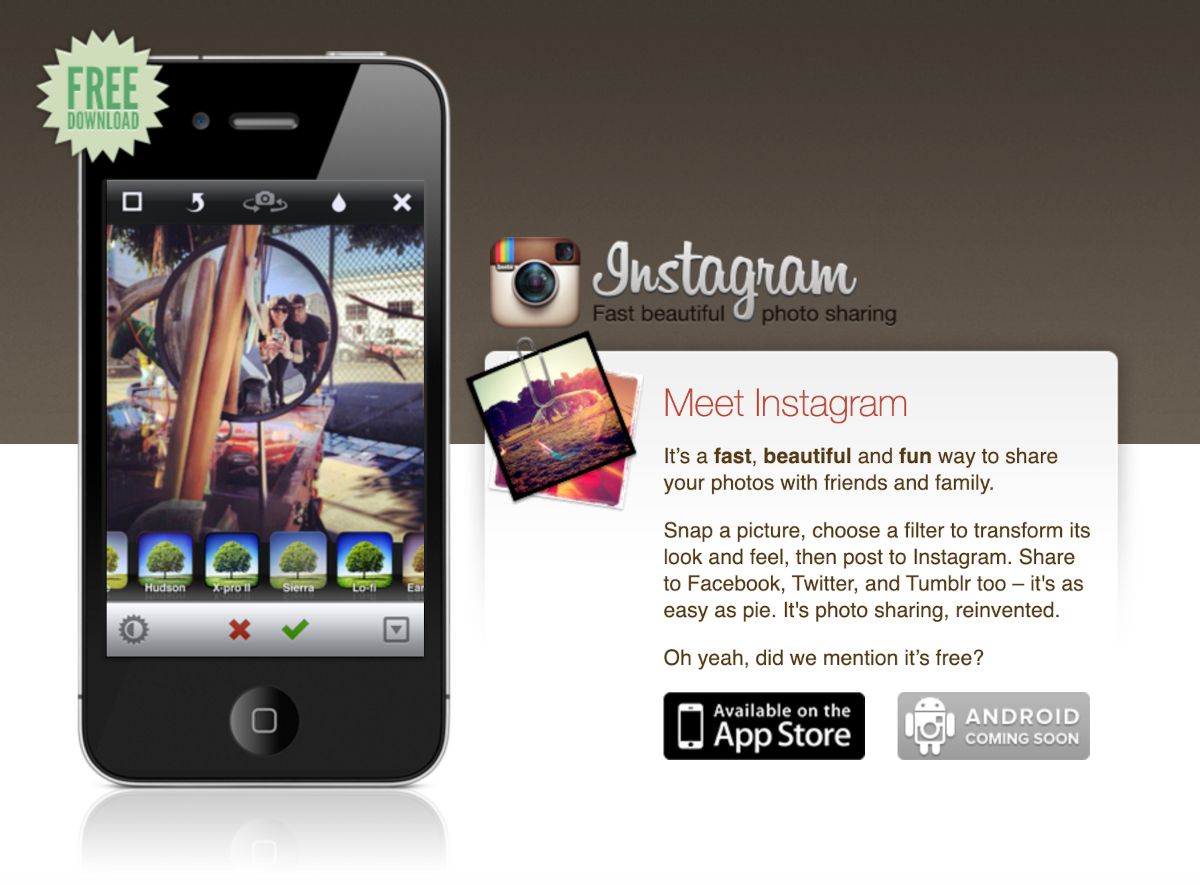
The Rise of the Visual Web
While Instagram represented the emergence of multimedia smartphone apps, Pinterest showed that the web browser was still a key platform for visual content.
Pinterest allowed you to “pin” images you came across on the web, and it managed to attract both a large consumer user base (regular web users, lifestyle bloggers) and a large business user base (marketers, brands). Both user types tended to use Pinterest for inspiration and to catalog ideas.
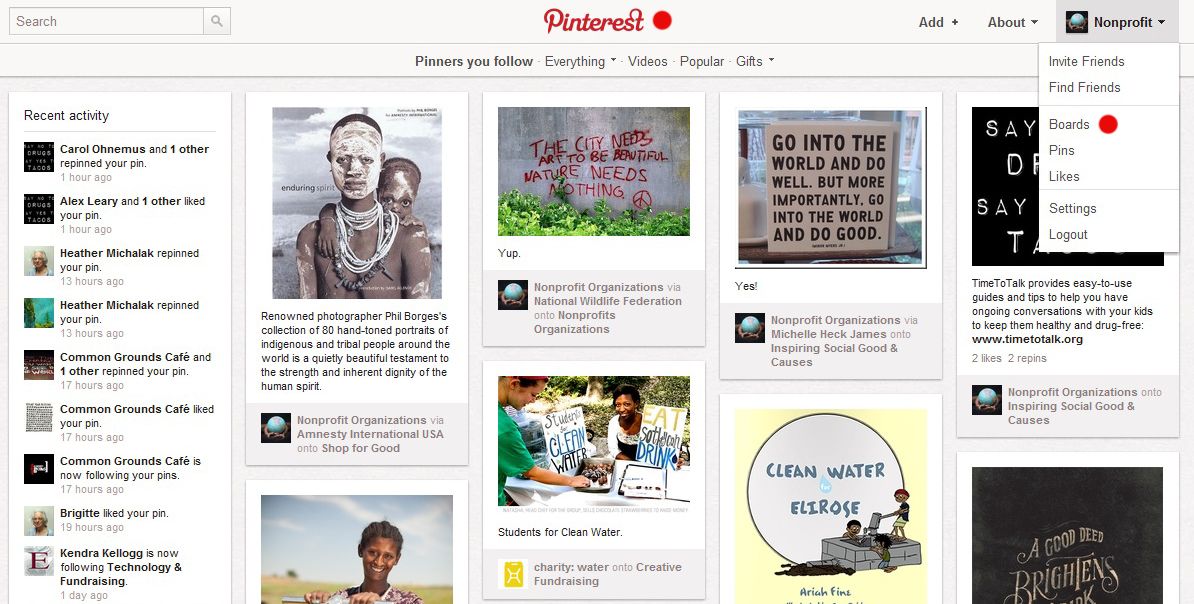
Pinterest was one of the fastest growing social networks of 2012. By September 2012, it was ranked one of the top 50 websites in the world according to comScore. By December, it was up to #42, just behind Netflix at #40.
Although Pinterest had launched back in 2010, it didn’t fully open to the public until August 2012. That same month, Pinterest launched apps for Android and iPad, as well as upgrading its iPhone app.
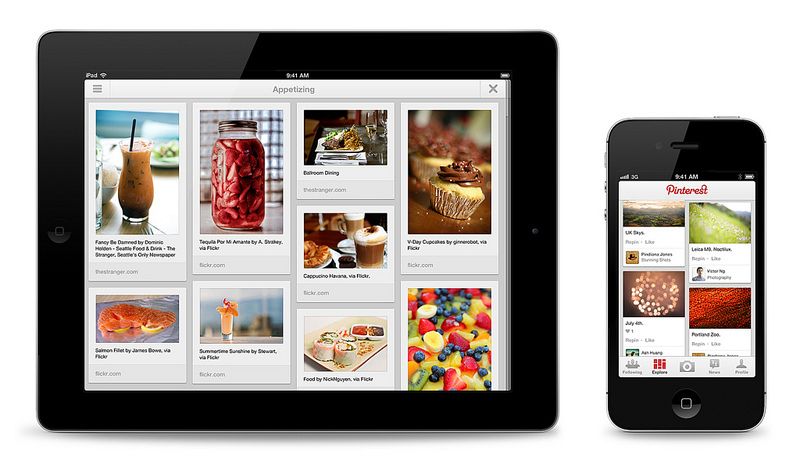
Online Video Growth
The 2012 internet was just as much about the rise of online video, a trend helped by the growing popularity of tablets to view videos.
YouTube continued to grow in 2012, but the most interesting trend was the professionalisation of its content. It was making deals with big media-producing companies like Disney and the NBA, while also investing in new kinds of content creators — such as the gaming network Machinima. As I put it in a May 2012 post on ReadWriteWeb, YouTube was “evolving Into a TV-style network, Web-style.”
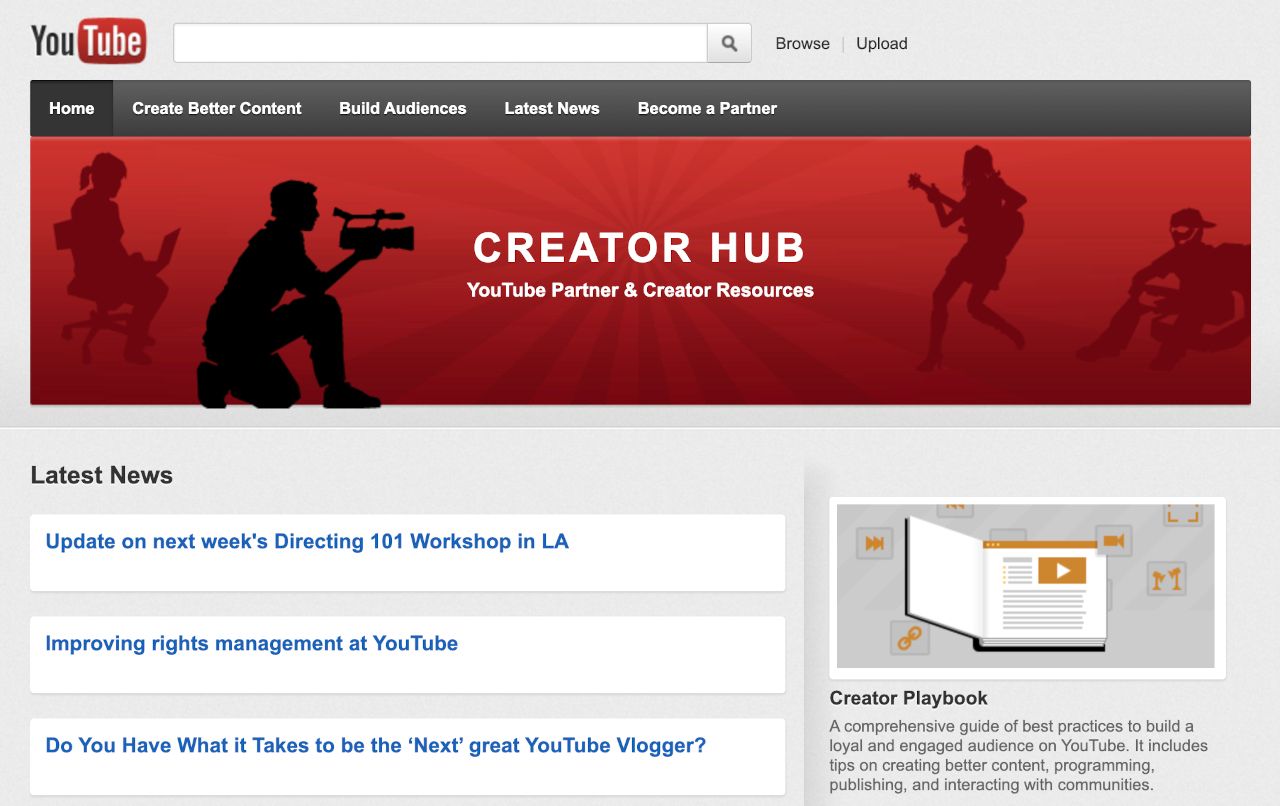
If text-based bloggers were the main creative force on the internet in the 2000s, then multimedia “creators” (previously called “vloggers”) took over that mantle in the early 2010s. As for where the word "creators" came from, culture reporter Taylor Lorenz posits that YouTube began using it around 2011.
This shift from user-generated content (UGC) to professional status for some YouTubers was really the beginning of the “creator economy," although that term wasn't yet being bandied about. This is how I explained it in May 2012:
“Right now YouTube is in a transition period, moving from the amateur era of online video to the professional era. But YouTube isn't just copying TV networks, instead it is banking on a new kind of professional content. To do that, YouTube is supporting and encouraging amateur content creators, giving them the opportunity to turn semi-pro or even full-on professional. The Creator Hub on YouTube entices "creators" (deliberately left undefined, so that it can mean everyone and anyone) to become a "partner" of YouTube.”
The Year of Picture Subreddits
The visual web trend also drove a lot of growth in Reddit, the social news aggregator that had by this point usurped competitors like Digg and Slashdot. By 2012, four of the top five subreddits were “focused on sharing pictures,” according to an analysis by Dr. Randal S. Olson, a data scientist. He characterised 2012 on Reddit as “The Year Picture Subreddits Took Over,” noting that 77 of the top 100 posts on the front page at the start of the year were images. “At this rate, it looks like Reddit will be an image board within a few years,” he added.
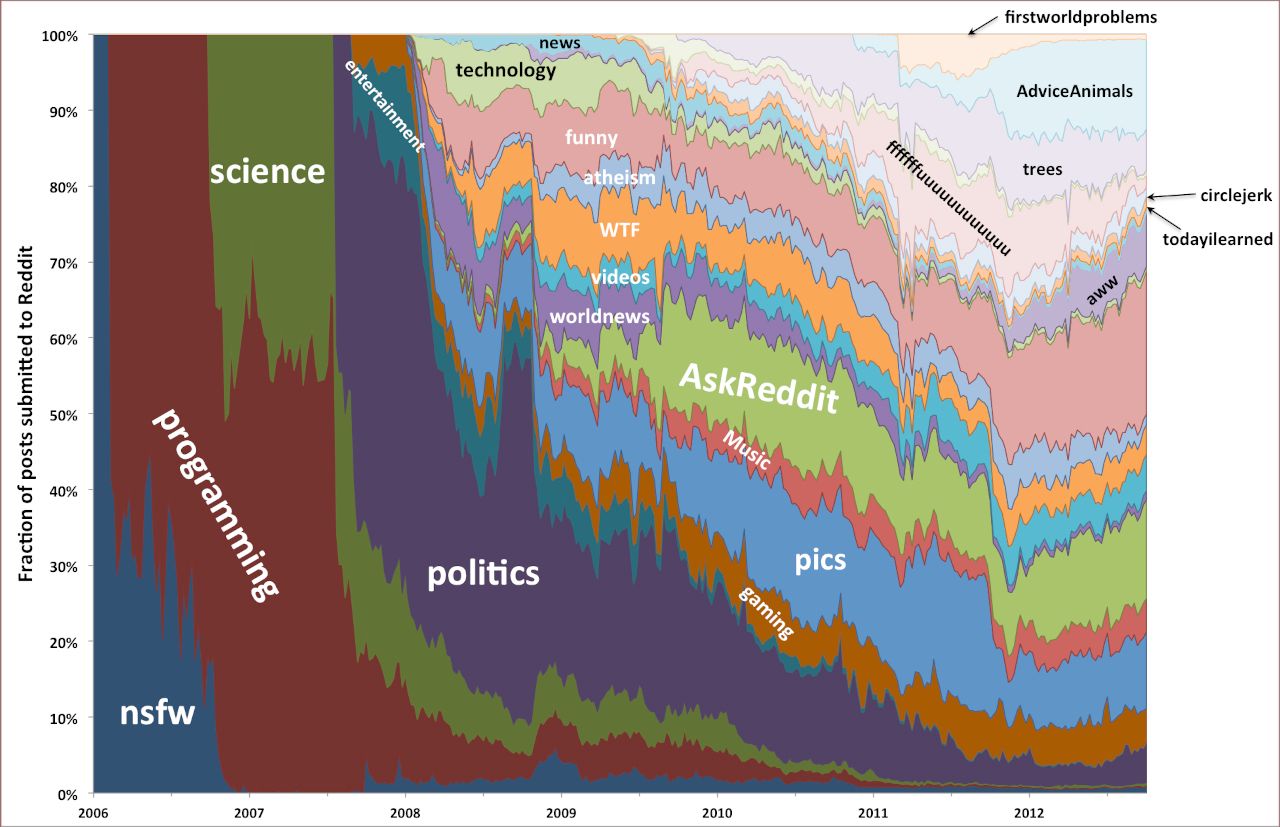
Reddit was well and truly a mainstream website by 2012, and the diversity of its subreddits expanded accordingly. As Dr. Olson put it, “even though the picture subreddits are dominating Reddit in terms of pure number of submissions, there are new subreddits dedicated to every topic you can imagine being created every day.”
Also in 2012, at the end of August US President Barack Obama became the first sitting head of state to moderate the site's "AMA" (ask me anything) series.
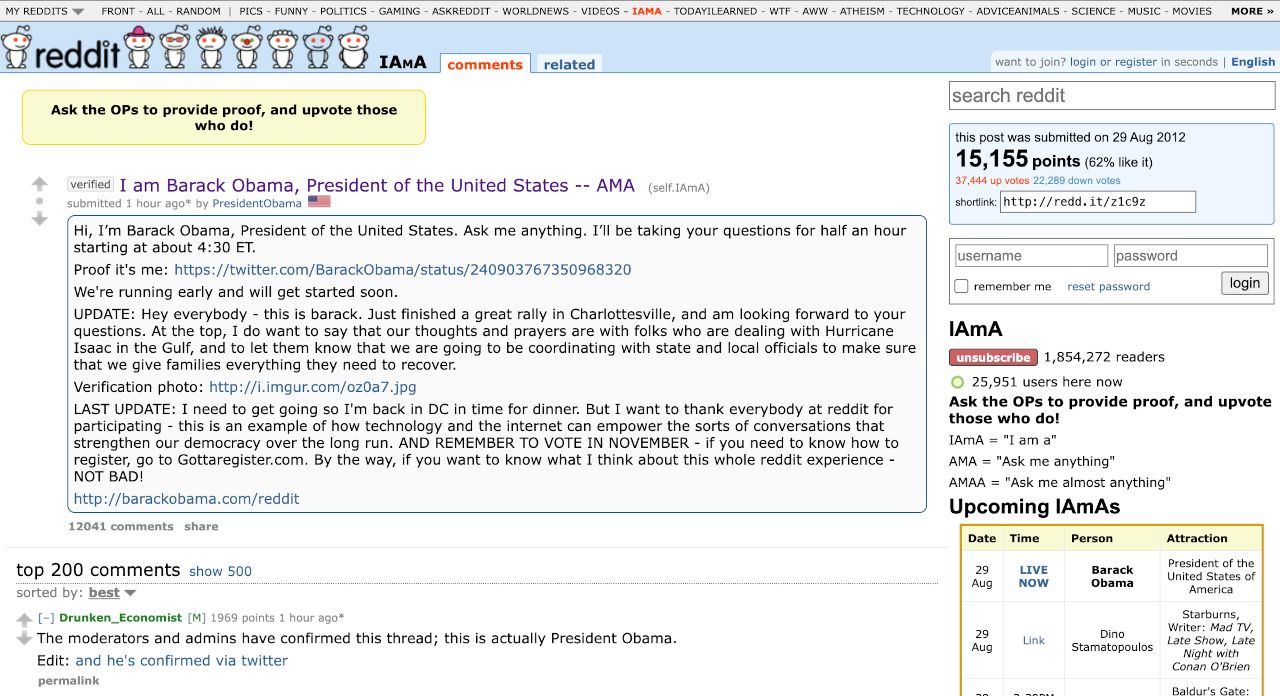
“The chat lasted an hour, and got so much attention that it shut the site down during his post. Redditers pitched softballs and hard alike, but the fact that the leader of the Free World participated in the site's chat confirms mainstream success and reach for Reddit.”
One More Thing
If there’s any doubt remaining that 2012 was when internet culture pivoted to multimedia, then let me present the most popular video on YouTube that year: Gangnam Style, a K-pop song by South Korean rapper Psy. It was released in July 2012 and by December had become the first YouTube video to reach a billion views. Enjoy!
Read next: More year-by-year overviews of internet history
Buy the Book
My Web 2.0 memoir, Bubble Blog: From Outsider to Insider in Silicon Valley's Web 2.0 Revolution, is now available to purchase:
- Paperback, US$19.99: Amazon; Bookshop.org
- eBook, US$9.99: Amazon Kindle Store; Apple Books; Google Play
Or search for "Bubble Blog MacManus" on your local online bookstore.